お手玉について
お手玉の歴史と文化
Otedama: History and Culture
お手玉は、小さな袋に豆や穀物・ペレット等を詰めた道具を手で投げ受けして楽しむ、日本の伝統的な遊びです。地域のわらべうたと一緒に遊ばれることも多く、世代を超えて親しまれてきました。
Otedama is a traditional Japanese pastime using small beanbags tossed and caught by hand, often accompanied by children’s songs, and enjoyed across generations.

起源と発展(諸説あり)
起源には諸説があります。世界各地に類似の「投げる/拾う」型の遊びがあり、日本には古くから石や貝を用いた遊びの記録が見られます。江戸末期〜明治期に、布袋に豆や穀物を入れた現在の形の「お手玉(おじゃみ)」が普及し、家庭や学校で広く楽しまれるようになりました。
Origins are uncertain. Related “tossing” and “picking” games exist worldwide. In Japan, records note stone/pebble play in early times; from the late Edo to Meiji eras, cloth beanbags (“ojami”) became popular in homes and schools.
遊びの型
代表的な型には、複数個を投げ上げる「なげ玉(投げ玉)」と、床の玉を拾い集める「よせ玉」があり、地域によってルールや歌が異なります。
Two common forms are nagedama (juggling-style tossing) and yosedama (picking up from the floor); rules and songs vary by region.
道具と素材
材料は木綿布などの布と、中身の小豆・米・数珠玉・プラスチックペレットなど。ペレットは湿気に強く長期保存に向きます。市販品の一般的なサイズは直径4〜6cm・1個あたり20〜40g程度が扱いやすい目安です(用途や世代で調整)。
Typical materials: cotton fabric and fillings such as azuki beans, rice, job’s tears, or plastic pellets (moisture-resistant). Common sizes are around 4–6 cm diameter and 20–40 g per bag, adjustable by user and purpose.
基本の道具
お手玉の作り方(材料)
Making Beanbags
- 布(木綿など)・糸・針
- 中身(小豆・米・数珠玉・プラスチックペレット)
- 目安:直径4〜6cm/重さ20〜40g
Materials: cotton fabric, thread/needle, and filling (azuki beans, rice, job’s tears, or plastic pellets). Typical size: 4–6 cm diameter, 20–40 g.
安全に楽しむポイント / Safety Tips
- 破れ・ほつれを定期点検し、破損時は中身が散らばらないよう速やかに補修
- 周囲のスペースを確保し、滑りやすい床や高所での練習は避ける
- 小さなお子さまは誤飲に注意(必ず大人が見守る)
Check for tears and repair promptly, ensure clear space, avoid slippery floors, and supervise small children to prevent ingestion.nd ball for damage.
基本の遊び方
まずは定番の4技から。難易度とポイントを確認して練習しましょう。
Start with these four classic tricks. Check difficulty and key tips, then practice.
片手投げ・受け
Single-hand toss & catch
難易度:★☆☆☆☆
手のひらをお椀のように保ち、低い軌道で優しく投げ上げて受けます。
Keep a cupped hand, toss gently on a low arc, and catch softly.
両手リレー / Hand-to-hand relay
難易度:★☆☆☆☆
右手から左手へ、一定の高さでリズムよく受け渡し。
Pass from right to left at a steady height and rhythm.
二つ持ち(2個) / Two-bag pattern
難易度:★☆☆☆☆
交互に上げ下げし、ぶつからない高さに調整します。
Alternate tosses and adjust heights so the bags don’t collide.
三つ持ち(基本カスケード)
Three-bag cascade (basic)
難易度:★★☆☆☆
左右交互に放物線を描くリズム。視線はおおよその頂点へ。
Alternate arcs in a cascade; keep eyes near the apex of the pattern.
ほかにもたくさんの技があるので、練習しながら楽しく挑戦してみてください。
There are many other tricks as well, so practice and enjoy trying them out.
上達のコツ
- 低めで一定の高さに投げる(安定重視)
- 肘を体の近くで固定し、手首で細かく調整
- 短い反復練習(10回×3セット)と動画でフォーム確認
- 歌やメトロノームでリズムを一定に
- Toss low and consistently.
- Keep elbows close; fine-tune with the wrist.
- Use short focused reps (10×3) and review with video.
- Practice with steady rhythm (songs or a metronome).
Q&A(よくある質問)
当民泊では、宿泊されるお客様に日本の伝統文化を体験していただくため、折り紙セットをご用意しています。
中身は何がいい? / What’s the best filling?
手触りと作りやすさでは小豆が定番。湿気対策や長期保存を考えるなら樹脂ペレットも便利です。
Azuki beans are classic for feel and ease of making; plastic pellets resist moisture and keep longer.
大きさ・重さの目安は? / What size/weight?
手に収まる直径4〜6cm・20〜40gが扱いやすい目安です。幼児や初心者は少し軽めが安心です。
Around 4–6 cm and 20–40 g fits most hands; beginners may prefer slightly lighter.
屋内でも大丈夫? / Safe indoors?
はい。周囲の安全確保と壊れ物から距離をとり、足元に注意してください。
Yes—ensure clear space, keep away from fragile items, and watch your footing.
歌は必須? / Do I need songs?
必須ではありませんが、一定テンポを保つのに役立ちます。地域のわらべうたを取り入れると楽しく続けられます。
Not required, but songs help maintain tempo; local children’s tunes add fun.
マナーと安全
- 人や家具の近くでは行わない。狭い通路や階段は避ける
- 破れたお手玉はすぐ補修・交換し、中身の散乱に注意
- 公共の場では短時間・静かな遊び方を心がける

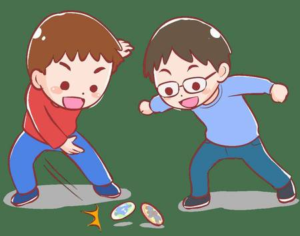
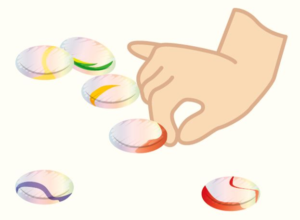
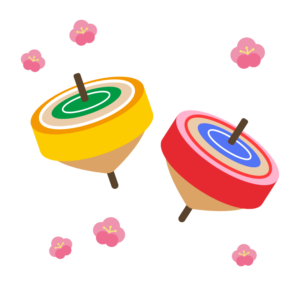
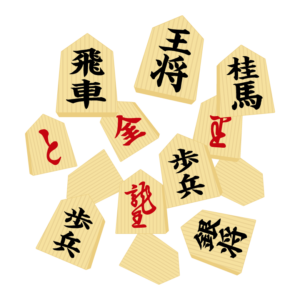
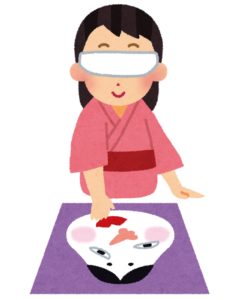
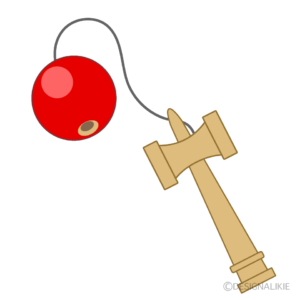
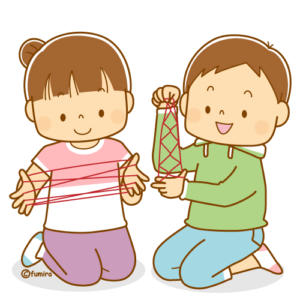

コメント